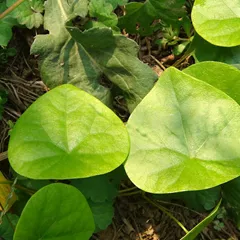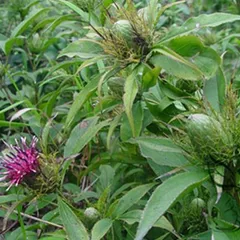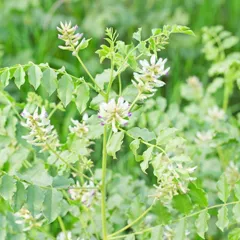Acute glomerulonephritis according to Chinese Medicine
The information provided here is not a replacement for a doctor. You shouldn't use it for the purpose of self-diagnosing or self-medicating but rather so you can have a more informed discussion with a professional TCM practitioner.
In Chinese Medicine, acute glomerulonephritis is sometimes associated with Wind-Damp, a so-called "patterns of disharmony". Chinese Medicine sees the body as a system, not a sum of isolated parts. A "pattern" is when the system's harmony is disrupted. It is not equivalent to the Western concept of "disease" because both concepts arise from totally different ways of seeing the human body.
To understand whether someone's acute glomerulonephritis might be caused by the pattern Wind-Damp, one needs to look for signs and symptoms associated with the pattern beyond what one might typically experience from acute glomerulonephritis alone. Indeed if acute glomerulonephritis is caused by Wind-Damp, patients also experience symptoms such as sweating, general sensation of heaviness, edema and urinary difficulty. Similarly, patients with Wind-Damp typically exhibit floating (Fu) pulses as well as a pale tongue with thick white coating.
We've listed below a more detailed description of Wind-Damp so that you can have a better understanding of where acute glomerulonephritis might find its root according to Chinese Medicine.
Once identified, patterns are often treated using herbal formulas. Drinking herbal infusions is the most common remedy in Chinese Medicine, together with acupuncture. Here we detail below two formulas that can help treat Wind-Damp.
Wind-Damp, a "pattern of disharmony" associated with acute glomerulonephritis
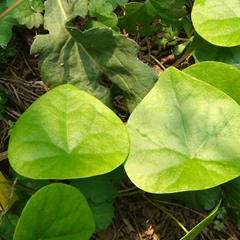
Stephania Roots (Fang Ji) is the key herb for Fang Ji Huang Qi Tang, a formula used for Wind-Damp
Wind-Damp
Pulse type(s): Floating (Fu)
Tongue coating: Thick white coating
Tongue color: Pale
Recommended herbal formula: Fang Ji Huang Qi Tang
Symptoms: Edema Sweating Urinary difficulty General sensation of heaviness
Acute glomerulonephritis might be due to Wind-Damp if the condition is paired with typical pattern symptoms such as sweating, general sensation of heaviness, edema and urinary difficulty. Similarly, patients with Wind-Damp typically exhibit floating (Fu) pulses as well as a pale tongue with thick white coating.
The two herbal formulas that might help with acute glomerulonephritis
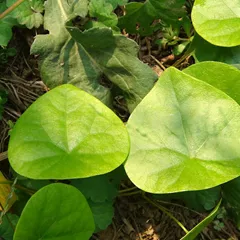
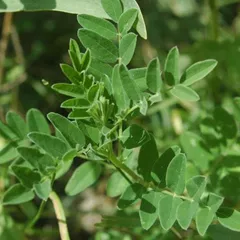

The top herbs in Fang Ji Huang Qi Tang are Stephania Roots (Fang Ji), Milkvetch Roots (Huang Qi) and Atractylodes Rhizomes (Bai Zhu)
Fang Ji Huang Qi Tang
Source date: 220 AD
Number of ingredients: 6 herbs
Key actions: Diuretic, clears Excess fluid and removes edema. Tonifies the Spleen Qi. Calms External Wind.
Why might Fang Ji Huang Qi Tang help with acute glomerulonephritis?
Because it is a formula often recommended to help treat Wind-Damp, a pattern sometimes associated with acute glomerulonephritis. If it looks like you might suffer from Wind-Damp, this formula might help (although please seek confirmation with a professional practitioner beforehand).

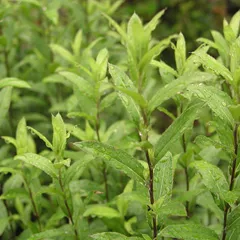

The top herbs in Wei Ling Tang are Water Plantain (Ze Xie), Black Atractylodes Rhizomes (Cang Zhu) and Poria-Cocos Mushrooms (Fu Ling)
Wei Ling Tang
Source date: 1481 AD
Number of ingredients: 9 herbs
Key actions: Promotes urination. Warms the Yang. Strengthens the Spleen. Drains Dampness. Promotes the movement of Qi. Harmonizes the Stomach.
Why might Wei Ling Tang help with acute glomerulonephritis?
Because it is a formula often recommended to help treat , a pattern sometimes associated with acute glomerulonephritis. If it looks like you might suffer from , this formula might help (although please seek confirmation with a professional practitioner beforehand).
Symptoms related to acute glomerulonephritis
Sweating General sensation of heaviness Edema Urinary difficulty

